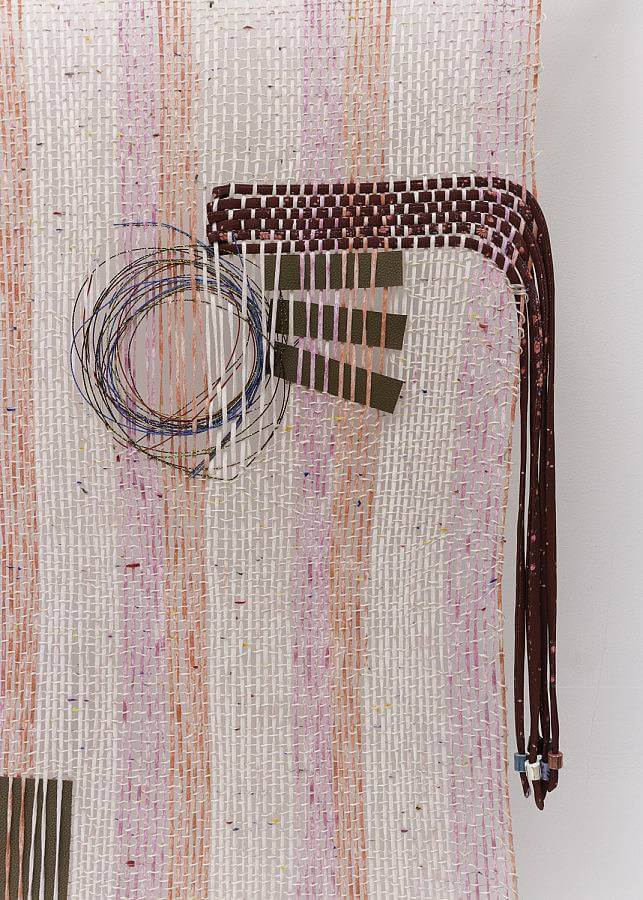Karolina Gnatowski’s work is autobiographical, folding her own history in with classic rock mythology and craft theory. She received her BFA in Fiber and Material Studies from The University of Arts Philidelphia and her MFA from The School of the Art Institute of Chicago (SAIC). She currently works as both artist and adjunct associate professor for the Fiber and Material Studies department at SAIC. Gnatowski has exhibited extensively in Chicago, throughout the US, and in Poland. She has also had numerous features in the Chicago Tribune, Chicago Artist Writers, and Chicago Art Review. Gnatowski was also a recipient of the Rosalie Borowski Belkin Award.
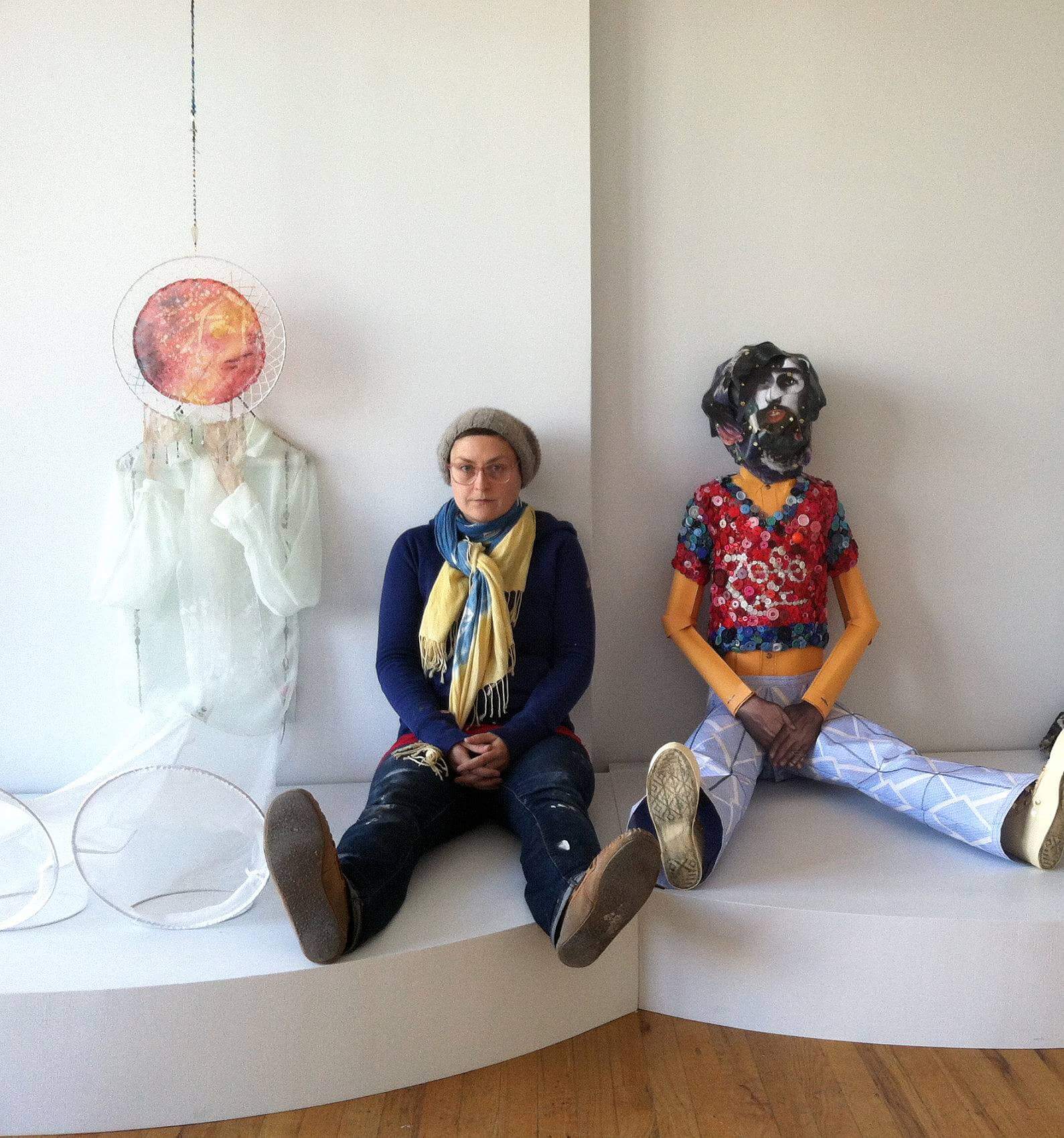
Tell us a little bit about yourself and what you do. I’m an artist and professor based in Chicago. In the studio, I work in series and recently finished a 27 piece body of work called L’esprit De L’escalier which is a French phrase meaning “the thought at the bottom of the stairs.” It refers to coming up with the perfect response too late or after the fact. I’m a big classic rock fan and most of my work is grounded in that. For this particular series, I focused on the Doors catalog and the mythology surrounding Jim Morrison and his death. Morrison was an alcoholic as was my father who also recently passed away. From my interest in mashing rock history and personal narratives, I use textile processes as a way to simultaneously make jokes about craft while also lending a critique of the continued marginalization of the craft world.
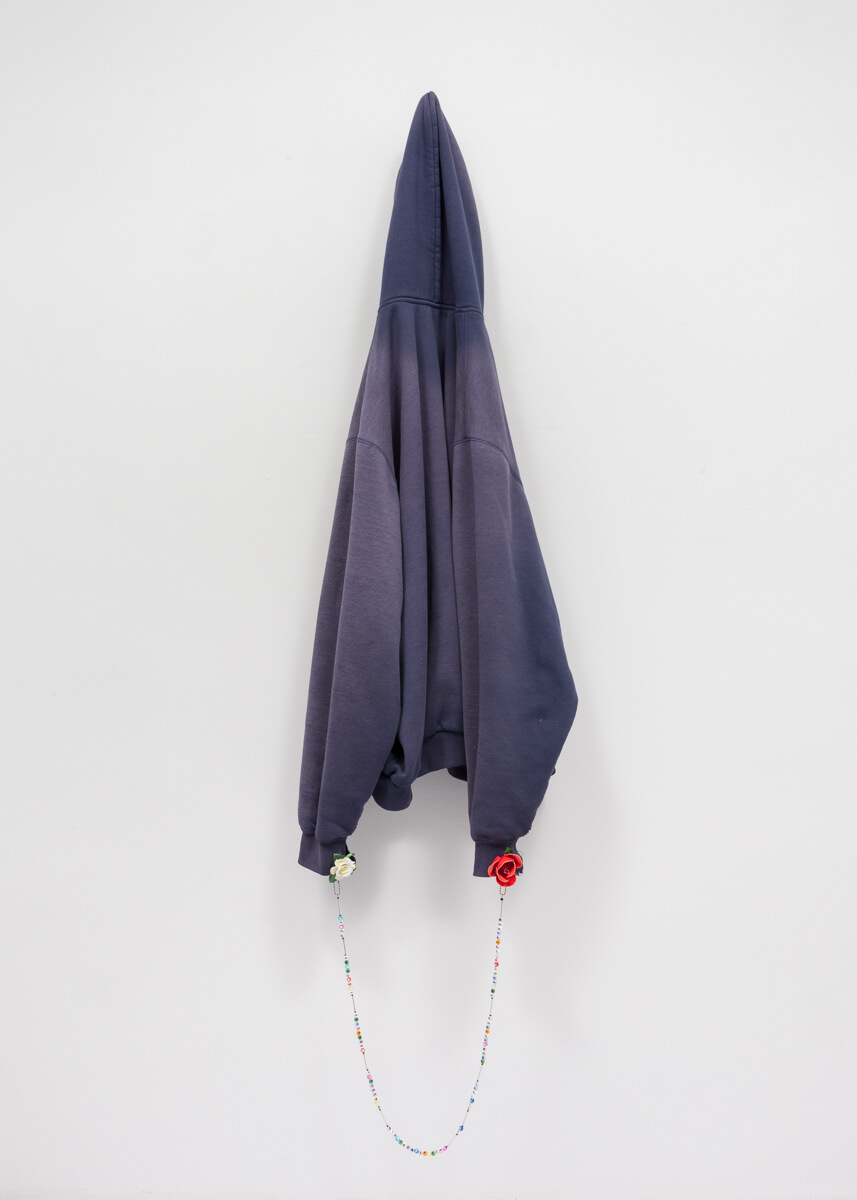
What are some recent, upcoming or current projects you are working on? I am currently working on a series of very small-scale weavings I call Hash Weavings. They are the compressed leftovers of throwaway materials that have accumulated in my studio. I’ve sworn not to purchase any additional yarns or chords until everything in my space has been woven up. I have done this before with a piece I made for The Franklin, in which I machine-knit every inch of yarn in my studio into a single cloth called Hash Mountain. That piece turned out to be over 150 yrds in length.
I have several shows coming up, including LTD Wear in conjunction with Tusk and LVL3, a group show at Left Field Gallery in San Luis Obispo, CA, and a group show at Adds Donna in September. I’m collaborating with Stan Shellabarger and Brian McCourt on a print edition at Sputnik Press and am also doing a mono-print for Sputnik’s annual auction. I co-host a regular Craft Club at Tusk that is open to anyone who wants to bug out and make stuff. I’m also working on a collaborative usable objects line called Slippers/Slippers with my pal Betsy Odom.
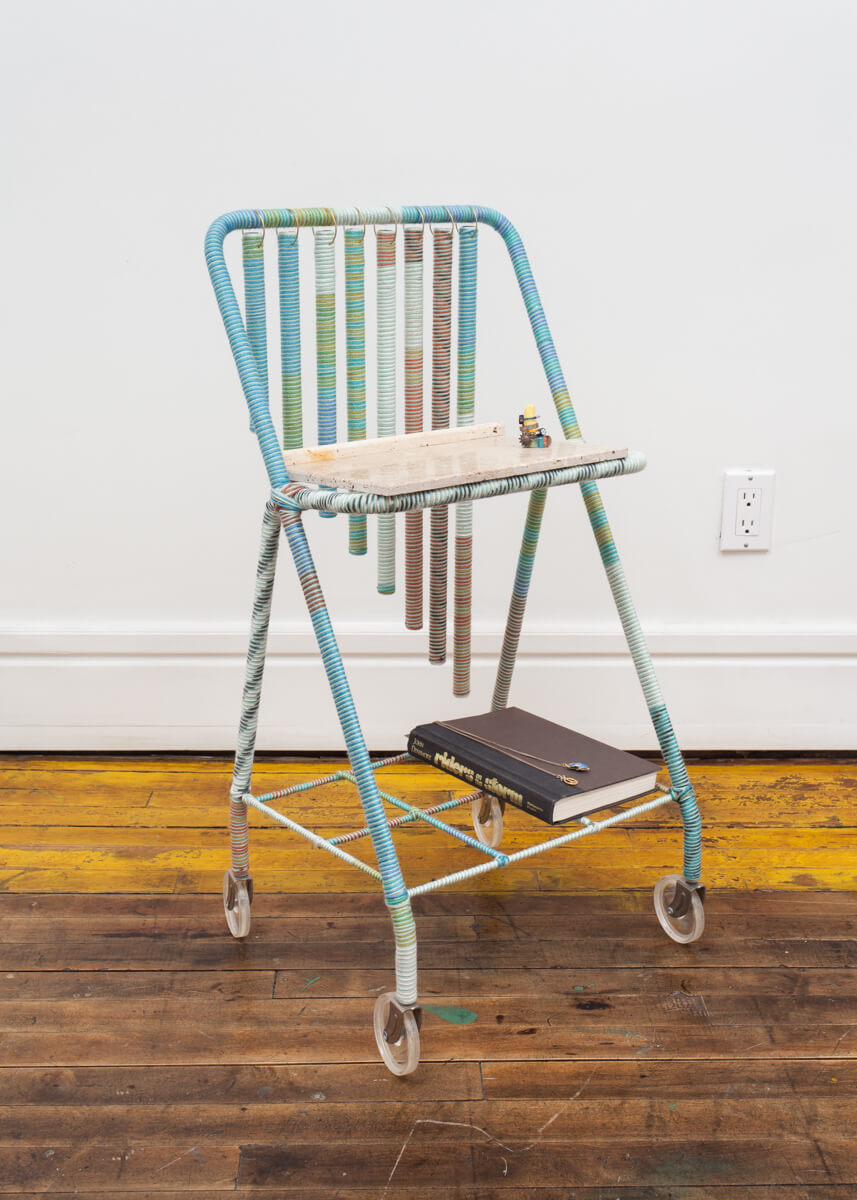
What is one of the bigger challenges you and/or other artists are struggling with these days and how do you see it developing? I think one of the biggest challenges in making art is also what makes it fun. The lack of resources—namely, money. Working around that issue leads to unexpected avenues to get projects done. Money is a tricky thing.
How did your interest in art begin? I’m one of those folks who is always making something. I grew up very poor and one of my only toys a child was our family sewing kit. At age 7 my father showed me how to sew buttons onto things. It just took off from there. At age 11 I begged for and received a sewing machine and started making as many of my own clothes and purses as I could teach my self to make. I always assumed when I got to college I would learn how to paint and make “proper art” but luckily, I was invited to a fiber exhibition on campus. The rest is history. I knew then that I already had a foundation of art making under my belt and I have kept working with fabric and string ever since. I have Suzie Brandt to thank for furthering my fiber-based education and teaching me the basics of SO many textile processes.
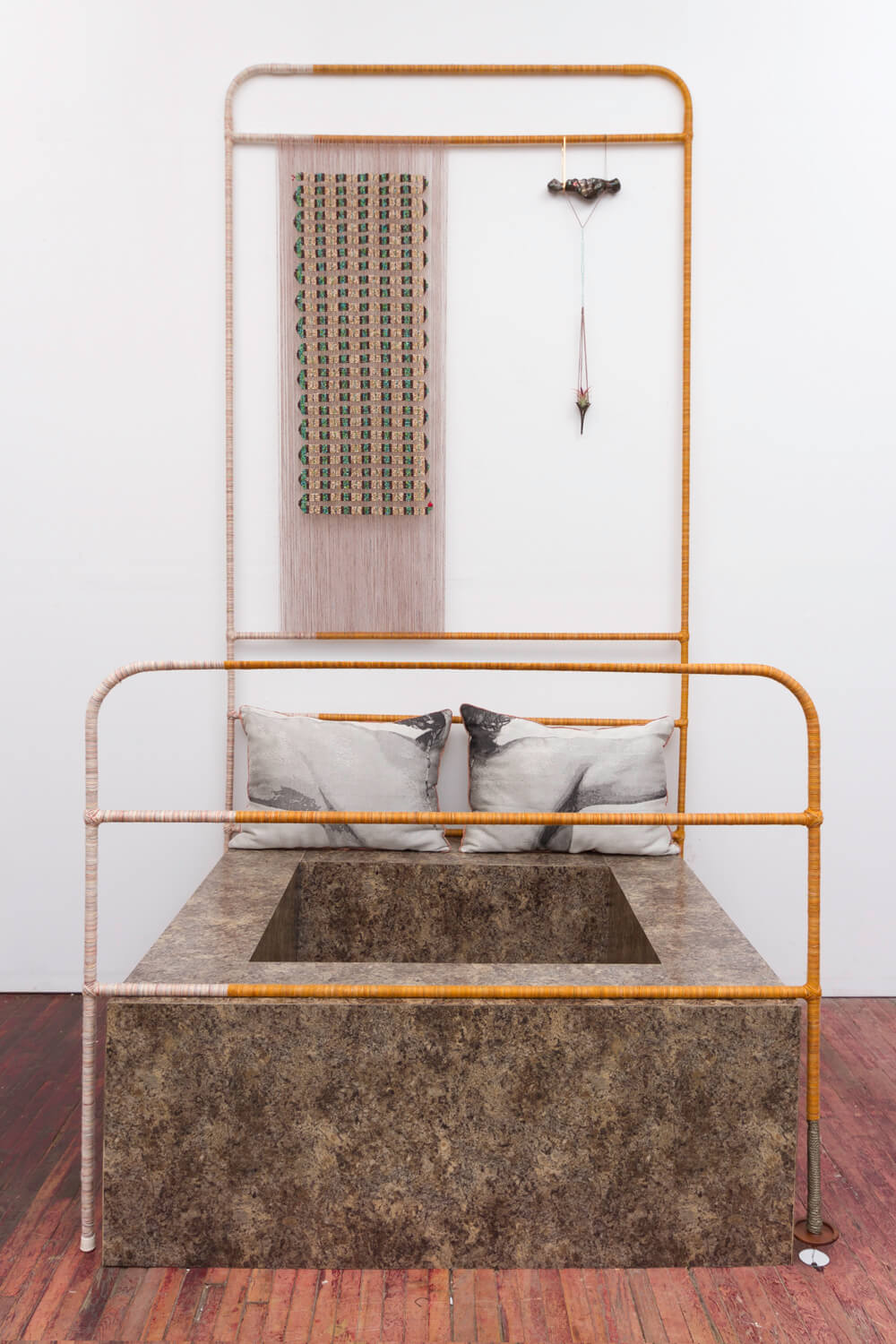
Do you have any guilty pleasures? Tell us about one. I watch “murder TV” all the time. Dateline, 20/20, I.D. channel, Stalked, Snapped…the list goes on. I look for the different frameworks used to make sense of otherwise senseless horrible acts. These shows also show crime scene photos and I’m very interested in the role textiles play in serving as an aesthetic backdrop for horror and their ability to aid in solving crimes by retaining DNA evidence. Carpet fibers are amazingly sneaky little things. There’s also a sensitivity that has to be exercised in how victims and suspects are depicted that doesn’t exist in other forms of media. My work is based in language so I like watching the delicate ballet in those types of shows.

What are you listening to right now? Obviously I’m a huge classic rock head so all of that stuff—all Zeppelin, most Doors, both Pink Floyds, Can, good Beach Boys, anything but Lynyrd Skynyrd. I hate Skynyrd. I’ve got some more recent things going like David Byrne, Rythm Nation 1814, Lemonade, Laurie Anderson, Yoko Ono, Kanye, Against Me, Donnie Trumpet & The Social Experiment. When I’m working on a series I usually listen to that single band exclusively or any other music that is historically attached to that band or album so I’m a bit dull that way but my partner makes the best studio work day mixes. Teaching helps too. I leave my Spotify account open during workdays and my students always play the best stuff.
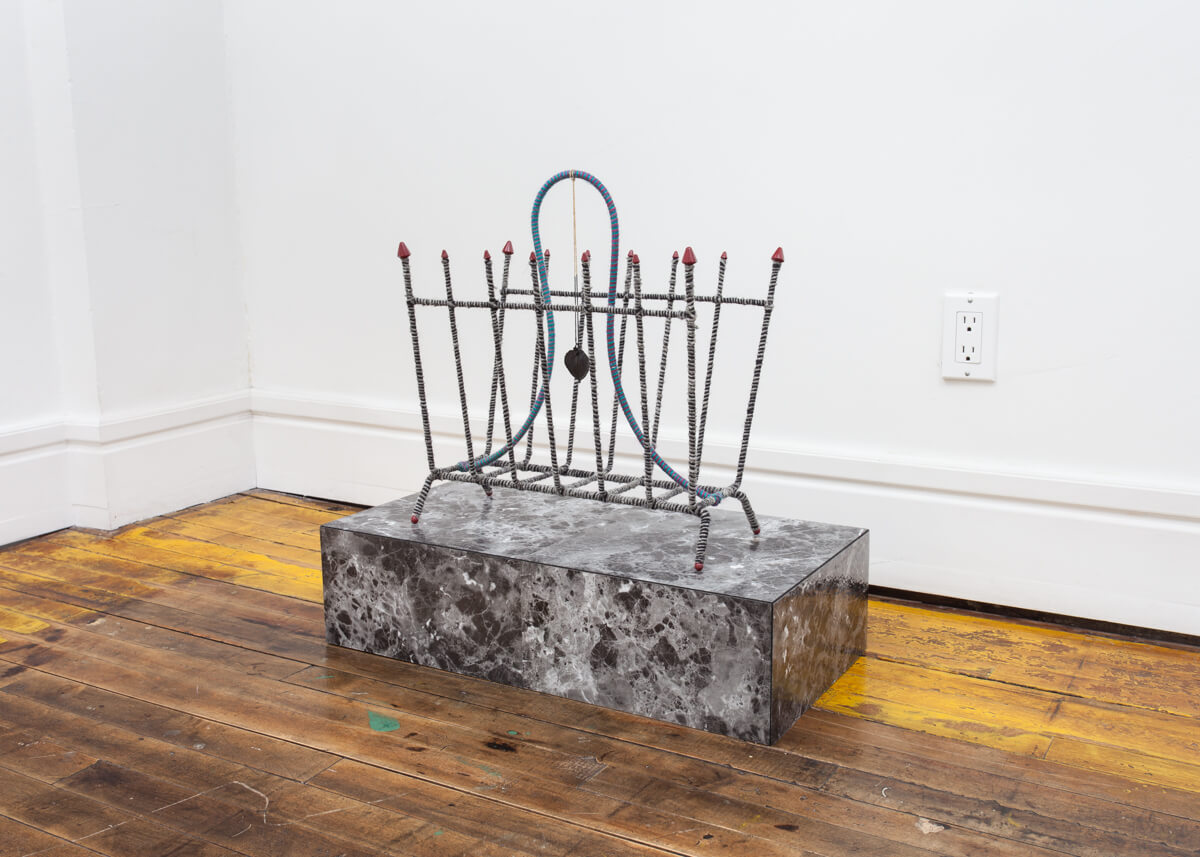
What do you do when you’re not working on art? Hanging out with friends and my best bud Pawel, my little Chihuahua Dotson mix. He loves going to openings with me and sleeping on my lap at outdoor cafes. I just moved into a new apartment with a beautiful balcony and I predict my new hobby will be drinking cold white wine outside with friends, thats so mid 30s isn’t it?
What do you collect? Artist made pipes to smoke my weed out of. I went on a shopping spree at Pop Up Pot Shop at Tusk and add to my growing collection when I can. The nice thing about smokers is that we are friendly and like to trade.

What was the last exhibition you saw that stuck out to you? I loved Magalie Guerin‘s show and book release at Sector 2337. Marissa Perel did a stunning performance during the exhibition where she walked around the gallery space and responded to each individual painting. I’m about half way through the book “Notes On Magalie Guerin” and highly recommend it for a summer read while toiling away in the studio. Also Noel Morical‘s show “High Swoon” at Andrew Rafazc Gallery was mind blowing good. Kayla Risko had a very subtle and sensitive set of paintings at Randy Alexander that I felt lucky to catch in person vs on the net. As I’m entering into making the same scale weaving over and over again, I’m finding myself looking for other artists that have repetitive, labor intensive processes and I like work that reveals something too subtle to capture on Instagram. All of these shows delivered that.
What artists are you interested in right now? Anne Wilson is one of my heroes, especially her walking projects. They are simple and absolutely stunning. I also love that she shares a name with Anne Wilson from Heart—my classic rock nerdiness has no limit. April Childers‘ work cracks me up, I actually laugh out loud when I see her stuff. She’s magical. Also Eva Hesse‘s early, more colorful works, Christina Forrer‘s tapestries, Leslie Baum, Caroline Achaintre, Christalena Hughmanick, Rachel Niffeneger-Tinder, and John Zappas.
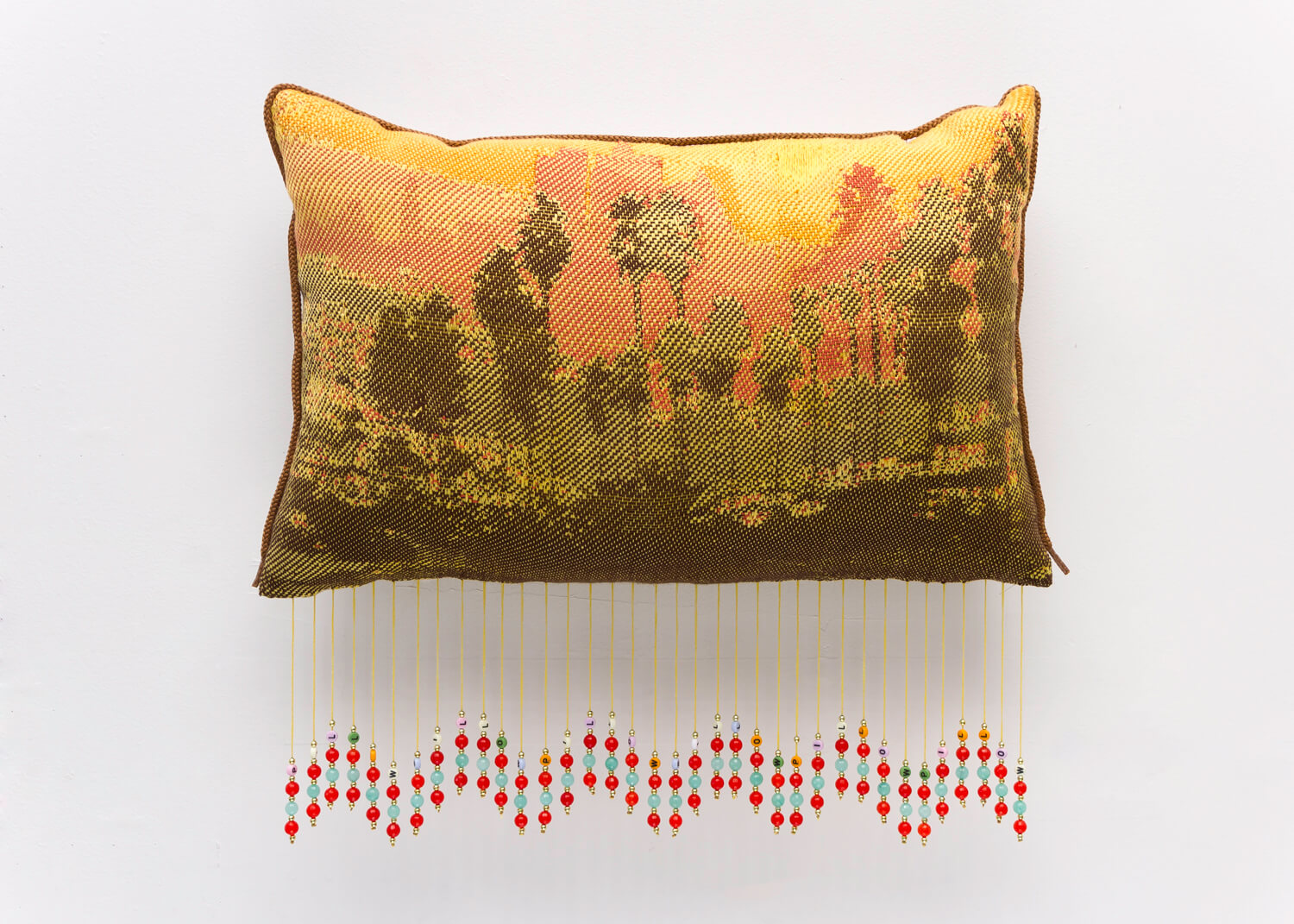
What’s your favorite thing about your city? The people here! As small as Chicago can seem sometimes I’m always meeting new people and discovering new work through studio visits. I’m constantly hosting folks in my space and hanging out in their studios. Chicago is a super friendly place for that. I also grew up in the Pocono Mountains so I may be one of the only people who actually loves the Chicago winter. I tend to get cranky if I don’t get snowed in at least once a season.
What is your snack/beverage of choice when working in your studio? I rarely eat meals in the studio and instead spend the entire day slowly sucking on peanut M&Ms and drinking coffee with homemade coconut milk. I also share popcorn with my dog. When I need a break I toss him kernels and he’s pretty good at catching them mid air.

Can you share one of the best or worst reactions you have gotten as a result of your work? One of the best was a few years back when Eric Shiner, the director of the Andy Warhol Museum in Pittsburg bought a piece of mine and hung it over his bed. I thought it was such an intimate space to hang a piece. Since then, I’ve made a series of headboards in response. The worst reaction happens quite regularly during studio visits when people say, “You should leave that on the loom so it looks more like a painting,” but it’s a good way of weeding out the bums.
